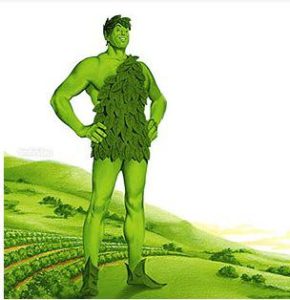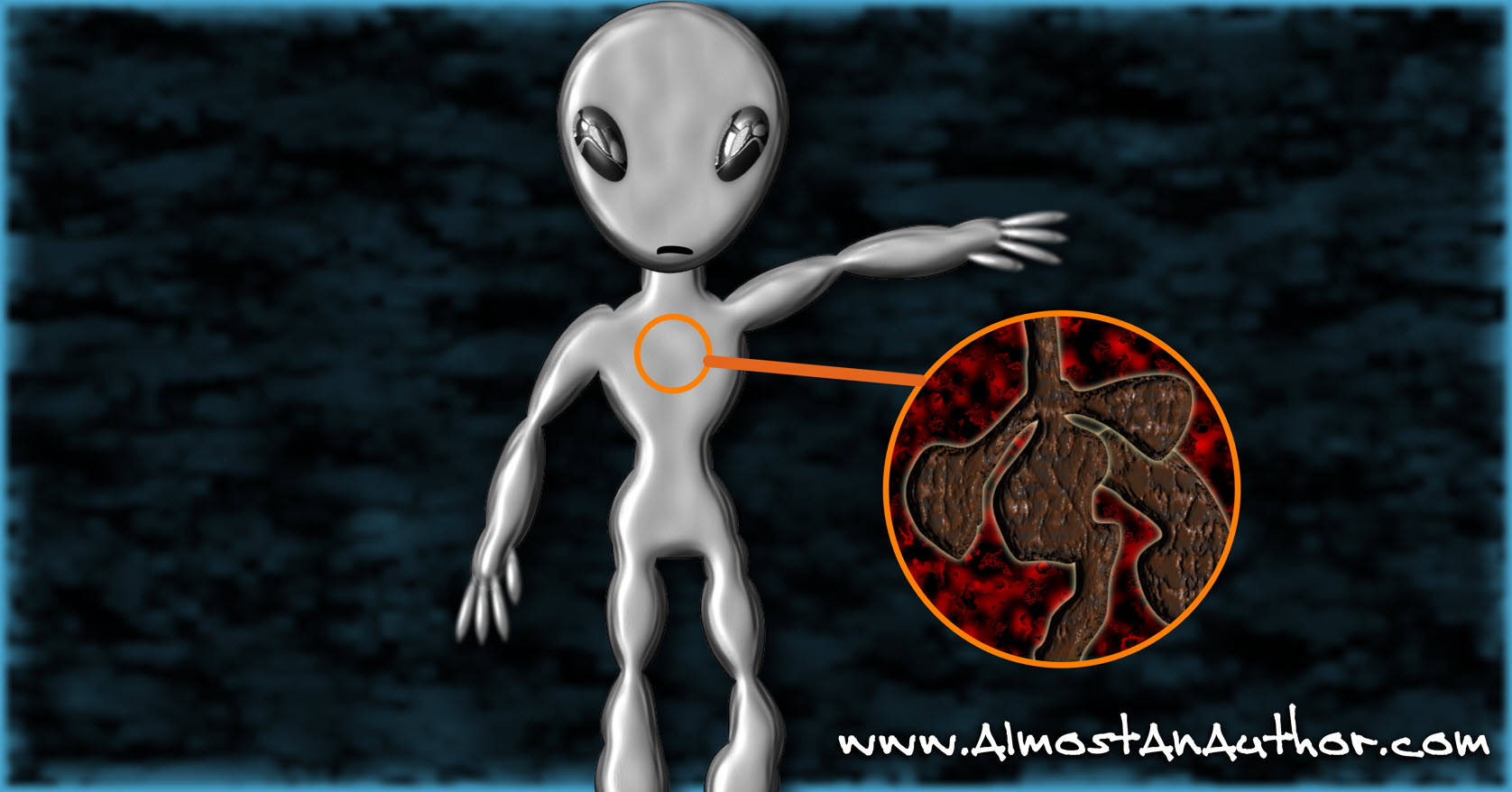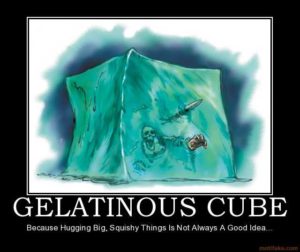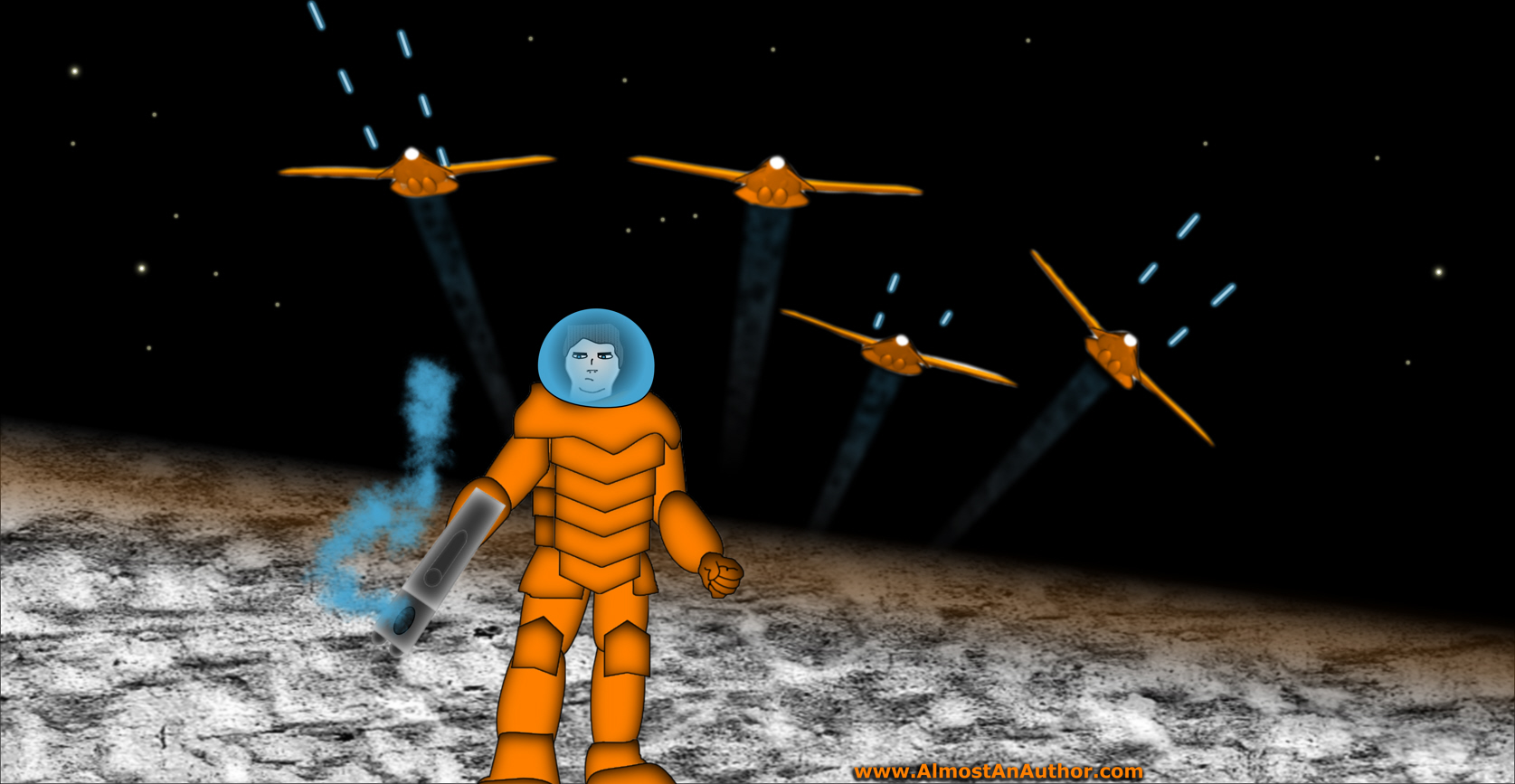The autopsy window allowed Jim a clear view of the good doctor’s grim work. The gray-skinned corpse had been cut open from neck to … whatever was between its legs, and its internal workings were just as alien as its external ones. Over the speaker, Doctor Stein began commenting on how the ugly fellow might digest its food. Apparently the little gray invaders had multiple stomachs like cows. Jim sighed. So their world was being invaded by bipedal gray-skinned cud-chewers. Great. Just great.
This month we continue our series on alien anatomy, literally delving into the bowels of unusual creatures – specifically their appetites. I’ve already posted an article about food and its necessity to your characters, which are probably vertebrates. That means they ingest their food, break it down, absorb it, and then circulate it to every single living cell in their bodies (which is headache-inducing if you stop to ponder it – don’t). Unused consumables are then disposed of in the same way that publishers typically treat unsolicited manuscripts. But with an alien anatomy, it bears mentioning that exotic creatures might ingest, digest, and circulate food differently.
Self-producing
 Take for example a typical plant. Its food is self-produced, using a special pigment called chlorophyll, plus sunlight, water, and carbon dioxide. It still needs potassium, nitrogen, and various other nutrients found in the soil, but the energy the plant uses is the sugar it produces for itself. This may not sound extremely interesting as a plot device in a book, but wait until you read John Scalzi’s Old Man’s War. I won’t spoil who the green-skinned creatures are, but suffice to say Scalzi incorporates a creature that uses chlorophyll-infused skin to further enhance its energy (as a hint, they aren’t the Jolly Green Giants).
Take for example a typical plant. Its food is self-produced, using a special pigment called chlorophyll, plus sunlight, water, and carbon dioxide. It still needs potassium, nitrogen, and various other nutrients found in the soil, but the energy the plant uses is the sugar it produces for itself. This may not sound extremely interesting as a plot device in a book, but wait until you read John Scalzi’s Old Man’s War. I won’t spoil who the green-skinned creatures are, but suffice to say Scalzi incorporates a creature that uses chlorophyll-infused skin to further enhance its energy (as a hint, they aren’t the Jolly Green Giants).
Externally Digesting
Other organisms like fungus and starfish actually digest their food externally. A fungus emits enzymes into the soil (or plant, organism, or whatever the fungus is feeding on), and its “food” breaks down around the root-like hyphae. The nutrients are then absorbed into those little tendrils. Try not to think of that the next time you get athlete’s foot. Arguably more gross is the starfish, which actually spits its entire stomach out of its mouth to digest its food externally. Creatures like this are likely to be pretty alien. Again, the world of Scalzi’s Old Man’s War is populated with interesting characters. Take the Gehaar for example, which are blue, tentacled extraterrestrials that inject their food with acid and slurp up the mostly-digested syrupy mess into their mouths. Yuck. But who knows what your space-faring adventurers or fame-seeking wizards will find in their world?
Otherworldly Appetites
But not all creatures need to follow the same rules as those in our own world. The second book in Larry Correia’s Monster Hunter series (incidentally, no relation to the Pokemon craze), includes some creatures called Oni, which feast off of souls to prolong their life. They do this in an almost literal way, because the souls are actually stored in a stomach-like bag inside the creature, where they are processed and provide energy for the evil beings. Apparently such a malevolent metabolism makes a monster very hard to kill too, since an entire section of Alabama interstate was virtually destroyed in the process. You’ll have to read Monster Hunter Vendetta to appreciate it though.
Picking up a Monster Manual from Pathfinder or 3rd or 5th edition D&D can also give you some interesting ideas for aliens and fantastic creatures (Note: 4th edition is great to play, but the monsters typically lack back-stories). Examples from these books are Gelatinous cubes and oozes that tend to be mindless blobs of jello that are only semi-aware. If you touch one though, your skin will begin to decompose in their uniform acidic bodies. That’s because their digestive systems are little more than homogenous blobs of acid. Rust monsters are also interesting since they eat metal, including magic weapons. In one of the editions this meant that one of their waste products would sometimes be residuum, a magical substance used to enchant other weapons.
That’s all on the menu this month. Next month we’ll talk about alien sex and reproduction, but don’t worry, I’ll keep it PG. Still, you may not want to invite your grandma.
Gelatinous Cube Inspirational Photo from http://catsoftindalos.blogspot.com/2016/05/caverns-of-slime.html
Green Giant image from https://www.tellwut.com/surveys/lifestyle/food-drink/91881-jolly-green-giant.html






 We love helping your growing in your writing career.
We love helping your growing in your writing career.

1 Comment
Thanks for your latest article Alex. I find thinking about how different creatures might exist in stories interesting. This is true even of fantasy books and games like Monster Hunter! These are some great places to start in creating and or understanding these different creatures or monster.
Tim